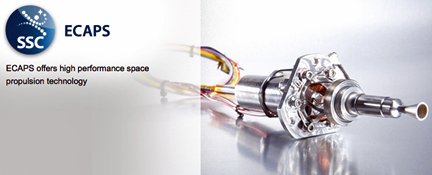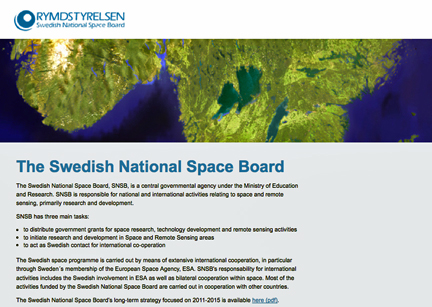
For further information regarding this technology, access the company's website at this direct link.
A unique satellite propulsion technology, HPGP is based on an environmentally-friendly propellant that is a much safer alternative to the highly toxic and carcinogenic substance hydrazine, which is presently the most common liquid monopropellant used on satellites.
ECAPS’ flight-proven HPGP technology, which uses the Ammonium DiNitramide (ADN)-based monopropellant designated LMP-103S, is environmentally benign and significantly easier to transport and handle than hydrazine—while still being fully compatible with all of the traditional structural materials and commercial off-the-shelf (COTS) fluid control components that are typically implemented within hydrazine in-space propulsion system designs. LMP-103S is insensitive to air and moisture exposure, and has demonstrated higher on-orbit performance than traditional monopropellant hydrazine systems.
In addition, the propellant complies with the European legislation regarding the Registration, Evaluation, Authorization and Restriction of Chemicals (REACH). These favorable characteristics provide increased flexibility to spacecraft manufacturers whose mission concepts require the ability to launch from various sites around the world.
In furtherance of the recently signed cooperative agreement, ECAPS will—under contract to SNSB—mature both the 5N and 22N thrusters to Technology Readiness Level (TRL) 6. Flight-like thrusters will then be delivered to NASA for testing and evaluation in the United States. LMP-103S propellant will also be delivered to NASA, for use in hot-fire ground testing and U.S. Range Safety analyses.
“We are seeking propulsion alternatives to hydrazine in order to decrease environmental and operational hazards and pollutants, reduce spacecraft processing costs and increase on-orbit performance,” said Dr. Christyl Johnson, Deputy Center Director for Science and Technology at NASA’s Goddard Space Flight Center. “We are happy to be working with SNSB under this cooperative agreement, and we look forward to collaborating with both SNSB and ECAPS on the testing, evaluation, and comparison of this technology to hydrazine.”
“The work to be performed under this agreement will serve to increase both governmental and commercial applications for HPGP within the United States, as well as on the global market,” said ECAPS President and CEO Mathias Persson. “NASA has a major impact on the worldwide space industry, as other space agencies and private companies often follow what happens in the U.S. For ECAPS, it is incredibly important to have NASA as a customer. The ability for HPGP thrusters to be implemented at higher thrust levels and in other new markets will also be improved, as the cooperation under this agreement will provide a platform for the continued maturation and commercialization of our products.”
Earlier this year, ECAPS was awarded a commercial contract by Skybox Imaging to design and deliver a complete 1-Newton HPGP propulsion system for implementation in Skybox’s planned constellation of Earth observation satellites. ECAPS’ 1N HPGP thruster has been successfully flight-proven in orbit for more than 3 years on the SNSB-funded PRISMA satellite mission, and demonstrated to provide higher on-orbit performance than traditional monopropellant hydrazine systems.


